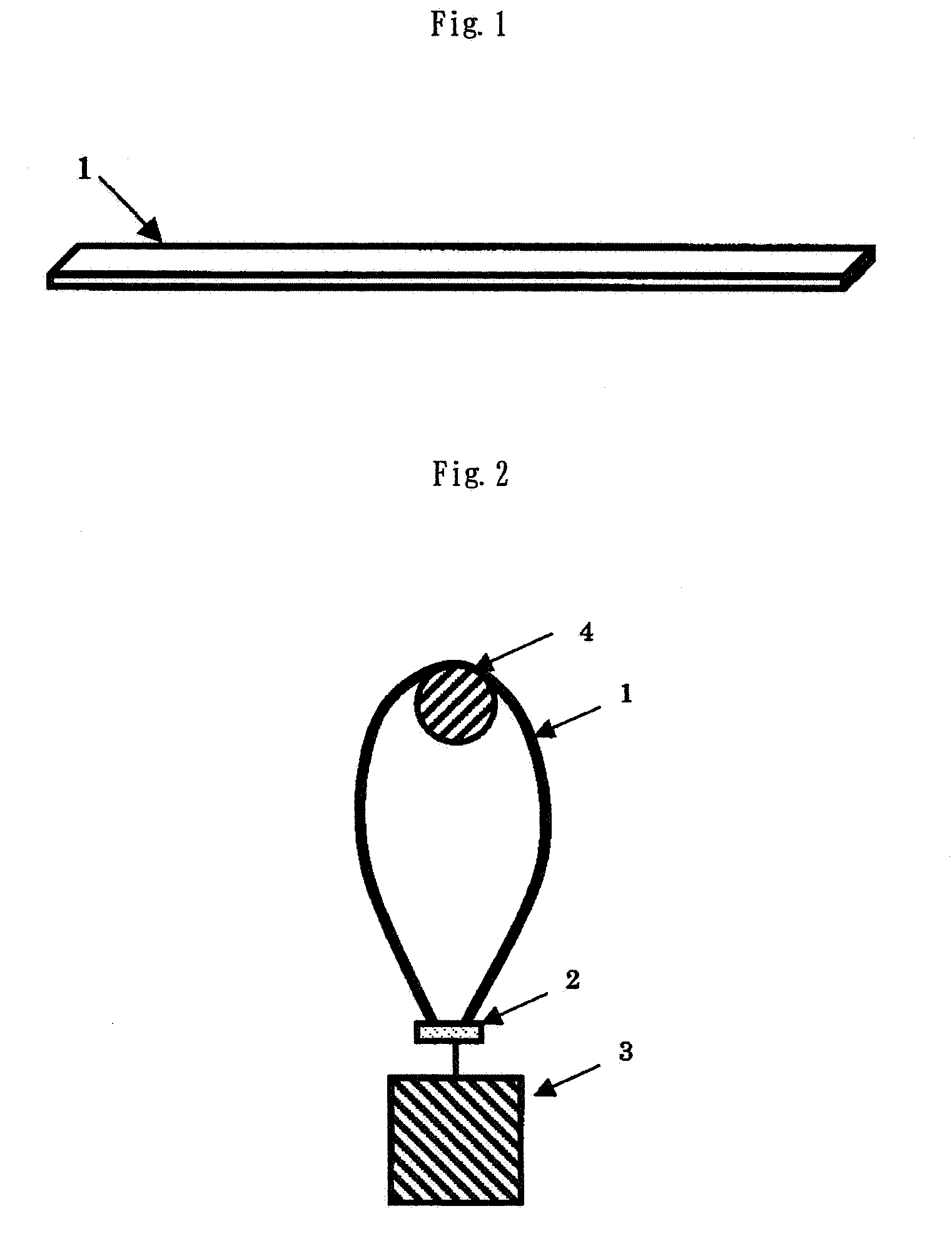Carbon fiber composite sheet, use thereof as a heat conductor and pitch-based carbon fiber web sheet for use in the same
a technology of carbon fiber composite sheet and heat conductor, which is applied in the direction of magnetic/electric field screening, synthetic resin layered products, wood working apparatuses, etc., can solve the problem of difficult to say that the thermal conductivity in the thickness direction is satisfactory, the specific gravity of metal-based fillers is high, and the effect of improving the three-dimensional thermal conductivity
- Summary
- Abstract
- Description
- Claims
- Application Information
AI Technical Summary
Benefits of technology
Problems solved by technology
Method used
Image
Examples
example 1
[0099]Pitch composed of a condensation polycyclic hydrocarbon compound was used as the main raw material. The ratio of the optical anisotropy of this pitch was 100% and its softening point was 285° C. A cap having a hole with a diameter of 0.2 mm was used, and heated air was ejected from a slit at a linear velocity of 5,000 m / min to draw the molten pitch so as to manufacture pitch-based short fibers having an average diameter of 10 μm. The spun fibers were collected on a belt to obtain a web which was then crosslapped to manufacture a 3-D random web composed of pitch-based short fibers having a weight of 250 g / m2.
[0100]This 3-D random web was heated in the air from 170 to 295° C. at an average temperature elevation rate of 7° C. / min to be stabilized. The stabilized 3-D random web was baked at 2,300° C. The baked 3-D random web-like carbon fibers had an average fiber diameter of 8.5 μm and a CV of 0.15. They had an average fiber length of 40 mm and a crystallite size of 26 nm.
[0101]A...
example 2
[0102]Pitch composed of a condensation polycyclic hydrocarbon compound was used as the main raw material. The ratio of the optical anisotropy of this pitch was 100% and its softening point was 285° C. A cap having a hole with a diameter of 0.2 mm was used, and heated air was ejected from a slit at a linear velocity of 5,000 m / min to draw the molten pitch so as to manufacture pitch-based short fibers having an average diameter of 10 μm. The spun fibers were collected on a belt to obtain a web which was then crosslapped to manufacture a 3-D random web composed of pitch-based short fibers having a weight of 250 g / m2.
[0103]This 3-D random web was heated in the air from 170 to 295° C. at an average temperature elevation rate of 7° C. / min to be stabilized. The stabilized 3-D random web was baked at 3,000° C. The baked 3-D random web-like carbon fibers had an average fiber diameter of 8 μm and a CV of 0.16. They had an average fiber length of 30 mm and a crystallite size of 45 nm.
[0104]A m...
example 3
[0105]Pitch composed of a condensation polycyclic hydrocarbon compound was used as the main raw material. The ratio of the optical anisotropy of this pitch was 100% and its softening point was 285° C. A cap having a hole with a diameter of 0.2 mm was used, and heated air was ejected from a slit at a linear velocity of 5,000 m / min to draw the molten pitch so as to manufacture pitch-based short fibers having an average diameter of 10 μm. The spun fibers were collected on a belt to obtain a web which was then crosslapped to manufacture a 3-D random web composed of pitch-based short fibers having a weight of 250 g / m2. This 3-D random web was heated in the air from 170 to 295° C. at an average temperature elevation rate of 7° C. / min to be stabilized. The stabilized 3-D random web was baked at 2,300° C. The baked 3-D random web-like carbon fibers had an average fiber diameter of 8.5 μm and a CV of 0.17. They had an average fiber length of 40 mm and a crystallite size of 18 nm.
[0106]A poly...
PUM
| Property | Measurement | Unit |
|---|---|---|
| Temperature | aaaaa | aaaaa |
| Length | aaaaa | aaaaa |
| Thickness | aaaaa | aaaaa |
Abstract
Description
Claims
Application Information
 Login to View More
Login to View More - R&D
- Intellectual Property
- Life Sciences
- Materials
- Tech Scout
- Unparalleled Data Quality
- Higher Quality Content
- 60% Fewer Hallucinations
Browse by: Latest US Patents, China's latest patents, Technical Efficacy Thesaurus, Application Domain, Technology Topic, Popular Technical Reports.
© 2025 PatSnap. All rights reserved.Legal|Privacy policy|Modern Slavery Act Transparency Statement|Sitemap|About US| Contact US: help@patsnap.com



